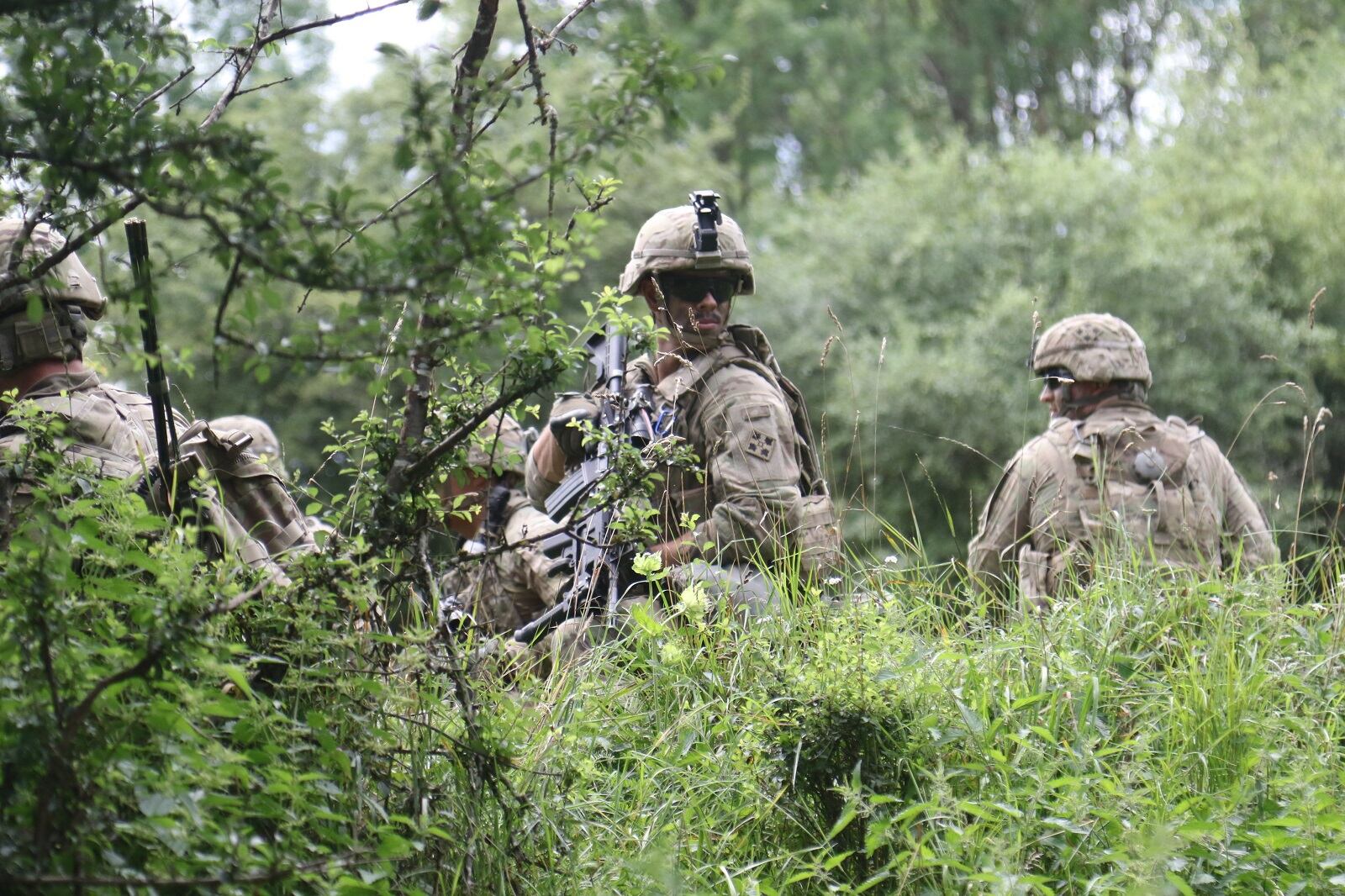It’s no secret the Army is behind the eight ball when it comes to electronic warfare solutions. Top commanders have acknowledged the service is outmatched in the tactical space against near-peer adversaries.
Enter: the Army Rapid Capabilities Office, which is trying to fill gaps in the electronic warfare space, among others, in one to five years. The RCO delivered a limited quantity solution set to Europe ― its main focus at the moment ― last spring to help get at U.S. Army Europe’s defined operational-needs statement.
The solutions ― VROD, which surveys the field from an electromagnetic perspective; and VMAX, which provides a limited electronic attack capability ― are very good, according to Chief Warrant Officer 2 Angel Colon, the electronic warfare technician for 3rd Brigade Combat Team, 25th Infantry Division.
“I think it provides the guys on the ground, the commander something that is very hard to understand, which is the spectrum out there,” he told the media at the Army‘s Cyber Blitz exercise, which C4ISRNET attended at Joint Base McGuire–Dix–Lakehurst, New Jersey. “Currently, units throughout the Army at every echelon … have no EW equipment to be utilized.”
The role of the RCO, according to some, is to act as that facilitator between the program executive offices and program managers to help them begin to field programs of record.
“The RCO’s also working in cooperation with the traditional PEOs and PMs to develop and field phase 1, 2 and 3 decision point sets of materiel,” said Richard Wittstruck, associate director for field-based experimentation and integration at the Communications-Electronics Research, Development and Engineering Center, who spoke to C4ISRNET at McGuire–Dix–Lakehurst. “It isn’t an either-or. It’s RCO is the chief in the secretary’s orchestrator of that multiphase EW [operational needs statement] that Europe has published. It’s going to come from several different vectors, whether it be direct from RCO, whether it be from PEOs working in conjunction with RCO.”
RCO is “working with the PMs so they are very tied in; that orchestrator role is really what I’ve seen RCO do the best,” Col. Dennis Wille, U.S. Army Europe G-3 for strategic programs, told C4ISRNET. “It’s the recognition of a lot of people trying to bring capabilities to bear on this problem. And by having some additional emphasis that at the two-star level and the [senior executive service]-level to do that integration, it has helped. It has helped deliver capability earlier than what the PMs would’ve delivered.”
The Army’s current timelines for electronic warfare programs of record ― called multi-function electronic warfare, which is broken into a ground and air component ― are not set to be delivered until at least the mid-2020s.
[Army nearing requirements on ground electronic warfare program]
The capability being to delivered to Europe by the RCO is one that gets after the phase 0 priority set established by U.S. Army Europe’s operational-needs statement as a quick-reaction capability, Wittstruck said. That capability, he added, will inform the requirements on multifunction EW for both air and ground.
The RCO’s capability is interim to fill the gap while the acquisition community develops the program of record.
What that means, Wittstruck said, is RCO might keep these solutions ― VROD and VMAX ― out there for the time being until they’re replaced with a program of record. In other words, the RCO isn’t going to deliver a third-generation VROD/VMAX to replace a first-gen VROD/VMAX; it might be something completely different.
RELATED

Regionalization
The risk in developing siloed rapid prototypes ahead of formal programs of record is that fielding different equipment to different units could lead to interoperability problems.
“One of the challenges is making sure that we don’t regionalize equipment; although I’ve talked to people that we should absolutely be regionally centric because the equipment you see in the Pacific, the adversary’s equipment in the Pacific, has different parameters versus the stuff you see in Europe,” Wille said. “There’s an argument for both of those, but the Army can’t tailor-make every single force that’s out there, because if a big conflict kicks off, Pacific forces will go to Europe or Europe forces will go to the Pacific, and if the Europe forces have tailor-made equipment for Europe, then they’re not really going to be effective.”
It ultimately comes down to the theater commander tailoring concepts, tactics, techniques and procedures to the operational condition. However, that means the materiel-development community must design equipment with the understanding of how it could be used in various theaters, Wittstruck said. “We need all the capabilities in the equipment so that commanders can make that choice in a regionally aligned force construct,” he added.
Given the Army doesn’t have much EW equipment, it’s testing new concepts at exercises and experiments such as Cyber Blitz. During a tour of the range at Cyber Blitz, friendly forces engaged in what Wittstruck dubbed military hide-and-seek using VROD and VMAX to geolocate enemy forces.
“Through the past two weeks we have been developing [tactics, techniques and procedures] TTPs to be employed at the very tactical level down to the company, battalion level and the utilization of this VMAX equipment and how can we push the information up to the brigade commander so he can have the ability to make on-the-spot decisions on what we see on today’s spectrum,” Colon said. “We have practiced the mounted TTPs, dismounted TTPs; and the way I see the future in the EW is moving away from the planning role that we currently have and just going more tactical with the employment of this new equipment that is coming up.”
Mark Pomerleau is a reporter for C4ISRNET, covering information warfare and cyberspace.








